Keyword research is one of the few things in SEO that hasn’t changed. No matter how many algorithm updates Google rolls out, understanding how to find and target the right keywords is non-negotiable if you want your content to rank.
If you’re an inbound marketer trying to get your site in front of the right audience, knowing how to do keyword research is a must.
Download Now: Keyword Research Template [Free Resource]
I’m breaking it all down for you in this post, where you’ll learn what keyword research is, why it’s important, how to conduct research for your SEO strategy, and how to choose the right keywords for your website.
Table of Contents
.png)
Keyword Research Template
Build your SEO strategy with this free template.
- Search Volume
- CPC
- Ranking
- Keyword Difficulty
Download Free
All fields are required.
.png)
What is keyword research?
Keyword research is the process of finding and analyzing search terms that people enter into search engines with the goal of using that data for a specific purpose, often for search engine optimization (SEO) or general marketing. Keyword research can uncover queries to target, the popularity of these queries, their ranking difficulty, and more.
Why is keyword research important?
Keyword research isn’t just about finding words with high search volume — it’s about finding the right words. Keyword research helps you find your SEO sweet spot — the overlap of keywords that aren’t too hard to rank for and keywords that you can confidently produce excellent content on.
You can also learn what your audience is actually searching for so you can create content that matches those terms.
I talked to HubSpot Growth Manager Amal Kalepp, who says that keyword research “determines who your competitors are and which area of the search landscape you can rank for. Doing keyword research and understanding where your blog or website sweet spot is — that’s what gives you rankability.”
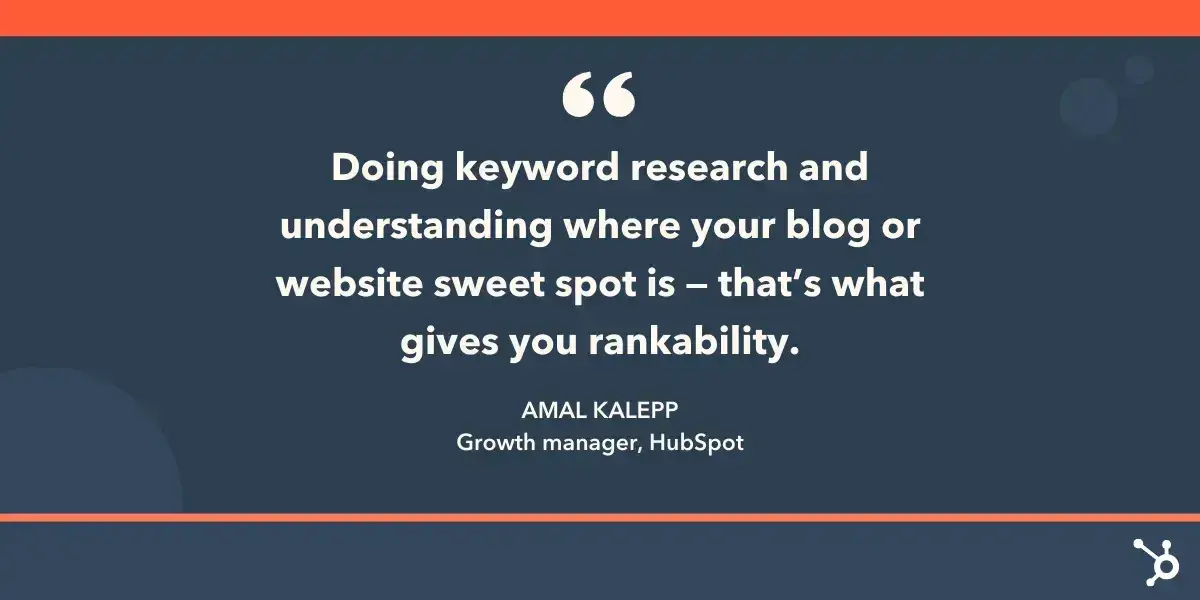
Insights from actual search terms can inform your content strategy as well as your larger marketing strategy.
Your Purranormal Detective Agency may have the best ghost-detecting kittens in the business, but if nobody’s searching for “cat paranormal detective” (they aren’t; I checked), you aren’t going to have much luck — or traffic — if you base your content strategy on that keyword.

People use keywords to find solutions when conducting research online, so if your content successfully gets in front of your audience, you stand to gain more traffic.
Therefore, you should be targeting those searches with content that features those keywords in a meaningful way.
Additionally, the inbound methodology focuses less on creating content around what we want to tell people. Instead, we should be creating content around what people want to discover.
In other words, our audience is coming to us for helpful content that provides the answers they’re looking for. And it all begins with keyword research.
Benefits of Keyword Research
SEO can feel like a long game… because it is. Quick wins happen, but the biggest shifts often take time. The most important rule? You’ve got to do your keyword research the right way. Here’s why:
You gain marketing trends insights.
Effective keyword research helps you spot current marketing trends and understand what people actually care about right now. No more guessing about what to focus on — you can use data to center your content on relevant topics and keywords.
You see traffic growth.
When you align your content to the best-fitting keywords, you’ll rank higher in search engine results, see lower bounce rates, and gain more leads and conversions.
Your customer acquisition game improves.
Not all traffic is the right traffic. But, by focusing your SEO research on what your audience wants, your content is more likely to meet your users’ needs. With the simple shift of adding a strong call-to-action, they’ll make a buyer journey leap from the awareness stage to the point of purchase.
By researching keywords for their popularity, search volume, and general intent, you can tackle the questions that most people in your audience want answers to.
For instance, the Purranormal Detective Agency would do better to produce excellent content on the broader topic of paranormal investigators, which has a monthly search volume (MSV) of 800.
Keywords vs. Topics
“Search intent” is something I frequently hear about from HubSpot SEOs. That’s because the reason a user types in a particular keyword matters — a lot.
Our content has to solve users’ problems. If you found your way to this article via the search term “SEO keyword strategy,” we have to anticipate your questions on this topic. And then answer them.
SEO is evolving at breakneck speed, but keyword research remains foundational to search intent. It tells you what topics people care about and how popular those topics actually are among your audience.
The operative term here is “topics,” plural. By researching keywords with a high volume of monthly searches, you can identify and sort your content into topics or buckets that you’ll use to create content.
Then, you can use these topics to dictate which keywords you look for and target.
.png)
Keyword Research Template
Build your SEO strategy with this free template.
- Search Volume
- CPC
- Ranking
- Keyword Difficulty
Download Free
All fields are required.
.png)
Elements of Keyword Research
Keyword research can feel complex — so let’s change that by breaking it into its three primary elements.
1. Relevance
Google ranks content for relevance.
This is where the concept of search intent comes in. Your content will only rank for a keyword if it meets the searchers’ needs.
In addition, your content must be the best resource for the query — Google won’t rank your content as highly if it doesn’t provide better value than its competitors.
If you’re starting an SEO business specializing in small businesses, you might assume that “SEO tips for small businesses” would be the most relevant keyword. But take a look at the Ahrefs keyword research dashboard:

“SEO tips for small businesses” has an MSV of 300 and a high keyword difficulty. Its parent topic, “small business SEO,” has an MSV of 2,500 and a very high keyword difficulty.
2. Authority
Google gives more weight to sources it deems authoritative. So, how do you become an authoritative source? Start by enriching your site with helpful, informative content and promoting that content to earn social signals and backlinks.
Both HubSpot.com and the HubSpot Blog are well-established sites, and we work hard to make sure we provide the content our readers are searching for. As a result, the root domain and subdomain have very high domain authority:


If you’re not seen as authoritative in the space, or if a keyword’s SERPs are loaded with heavy sources you can’t compete with (like Forbes or The Mayo Clinic), you have a lower chance of ranking.
3. Volume
You might rank on the first page for a specific keyword, but if no one ever searches for it, you won’t see any traffic. It’s like setting up a shop in a ghost town.
Volume is measured by MSV (monthly search volume), which means the number of times the keyword is searched per month across all audiences.
Compare Ahrefs’ results for “cat detective agency” versus “paranormal investigator”:
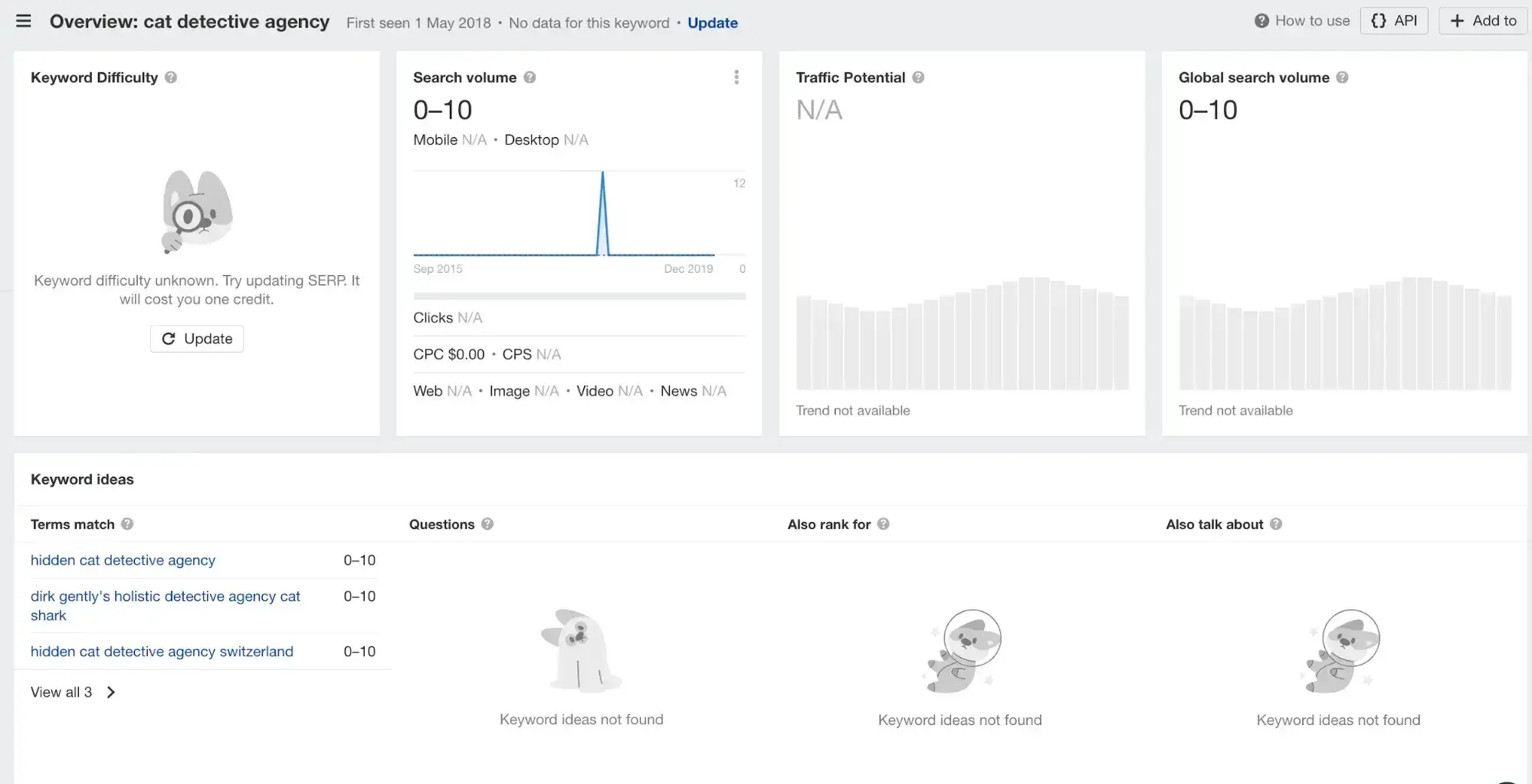
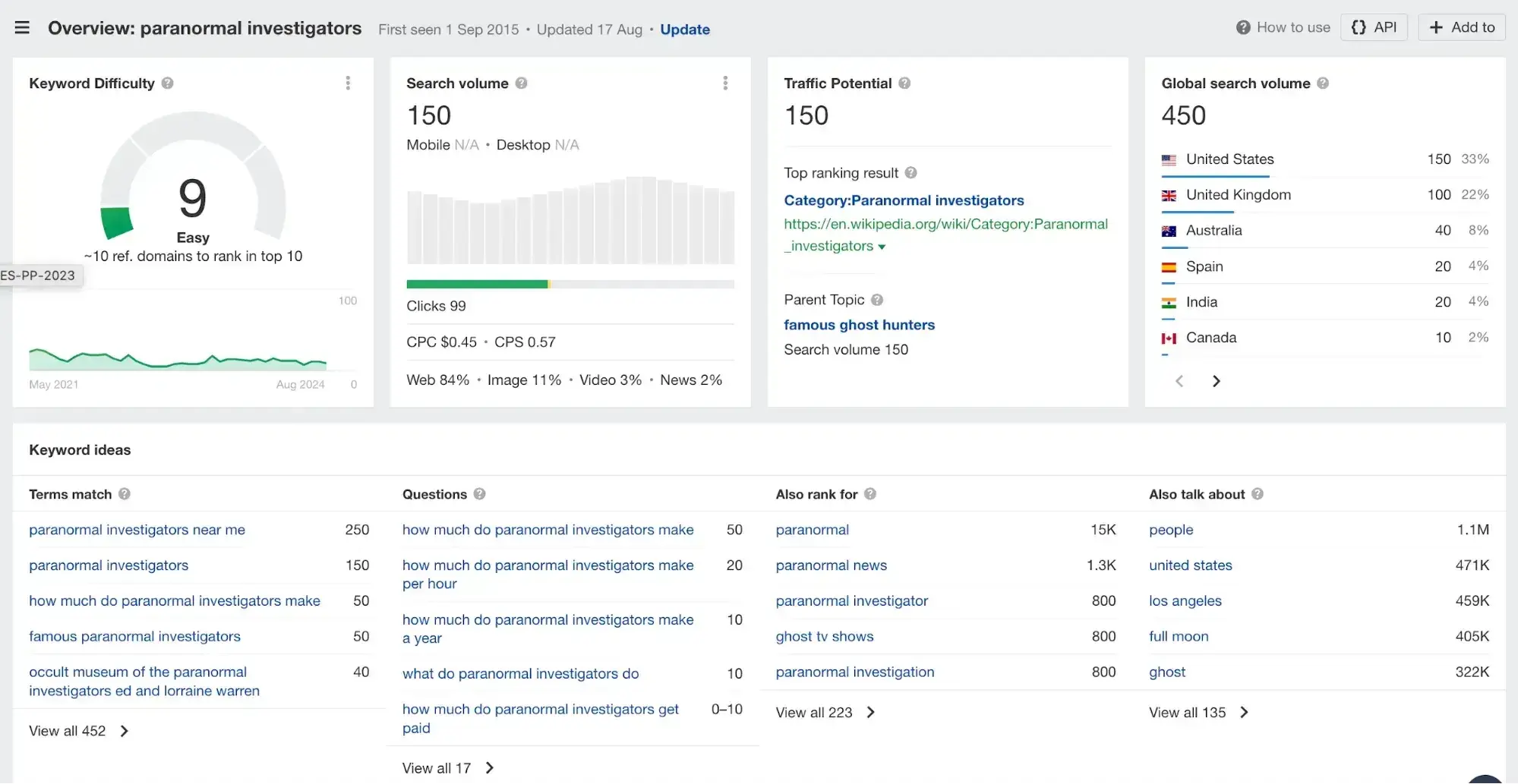
Even though kitten detectives are your business’s differentiating factor, absolutely not a single soul is trying to locate a cat who can sniff out their resident poltergeist.
“Paranormal investigators” isn’t a wildly popular search term, but as you might guess, this keyword gets significantly more volume than “cat detective agency,” so it’s a much better keyword to try to rank for.
Kalepp says that one of the common mistakes people make is assuming that a higher MSV is better. “‘Instagram marketing’ might seem like the best choice to rank for because it has millions of searches,” she says. “But it makes it much more difficult to rank for that.
“You might have better luck with something like ‘Instagram marketing for small businesses’ — and then that can be your niche.”
She says that you could get “a lot more traffic ranking for a keyword that has a lower MSV and lower competition” than one with a high MSV.
How to Research Keywords for Your SEO Strategy
- Make a list of important, relevant topics based on what you know about your business.
- Fill in those topic buckets with keywords.
- Understand how intent affects keyword research and analyze accordingly.
- Research related search terms.
- Use keyword research tools to your advantage.
I’m going to lay out a keyword research process you can follow to help you come up with a list of terms you should be targeting.
That way, you’ll be able to establish and execute a strong keyword strategy that helps you get found for the search terms you care about.
Step 1. Make a list of important, relevant topics based on what you know about your business.
Before you do anything else, spend some time thinking about the topics you want to rank and come up with 5-10 different topic buckets.
Next, drill down a bit further to help come up with some specific keywords later in the process.
If you’re a regular blogger, these are probably the topics you blog about most frequently. Or perhaps they’re the topics that come up the most in sales conversations.
Not sure where to start? Think about what you want to be known for. Or, you can also put yourself in the shoes of your buyer personas and think about what they want to know.
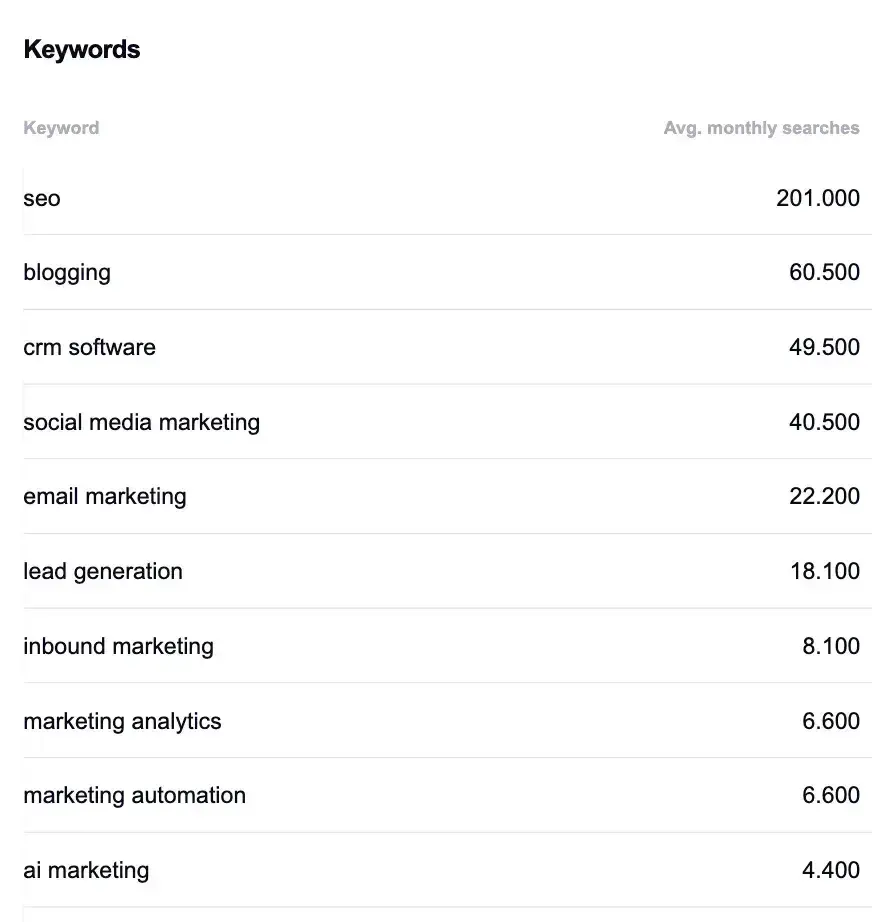
HubSpot, for example, might have general topic buckets like:
- “SEO” (201K)
- “blogging” (60.5K)
- “CRM software” (49.5K)
- “social media marketing” (405K)
- “email marketing” (22.2K)
- “lead generation” (18.1K)
- “inbound marketing” (8.1K)
- “marketing analytics” (6.6K)
- “marketing automation” (6.6K)
- “AI marketing” (4.4K)
The number in parentheses is the MSV, according to Ahrefs.
That data allows you to gauge how important these topics are to your audience and how many different sub-topics you need to create content on to be successful with that keyword.
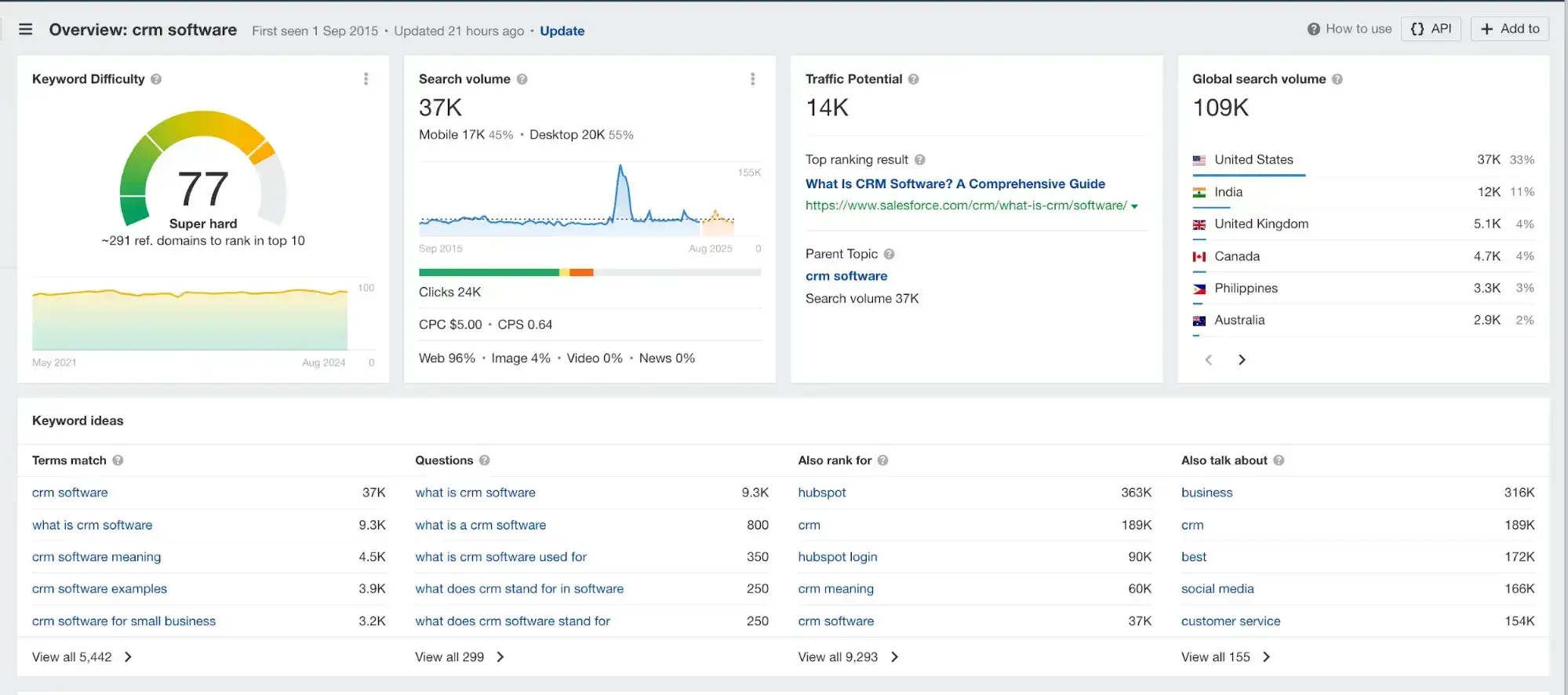
To learn more about these sub-topics, we move on to step two.
Step 2. Fill your topic buckets with keywords.
Now that you have a few topic buckets you want to focus on, it’s time to identify some keywords.
I want you to think about keyword phrases you want to rank for in the SERPs (search engine results pages) because your target customer is probably conducting searches for those specific terms.
For instance, if I took that last topic bucket for an inbound marketing software company — “marketing automation” — I’d brainstorm some keyword phrases I think people would type in related to that topic.
Those might include:
- AI marketing tools.
- Marketing automation tools.
- How to use marketing automation software.
- What is marketing automation?
- How to tell if I need marketing automation software.
- Lead nurturing.
- Email marketing automation.
- Top automation tools.
The point of this exercise isn’t to come up with your final list of keyword phrases. Instead, it’s all about brain-dumping phrases you think potential customers might use to search for content related to that particular topic bucket.
We’ll narrow the lists down later so you don’t have something too unwieldy.
Keep in mind — Google is encrypting more keywords every day, so another smart way to generate keyword ideas is to determine which keywords already bring users to your website.
To do this, you’ll need website analytics software like Google Analytics, Google Search Console, or HubSpot’s Sources report, which are available in the Traffic Analytics tool.
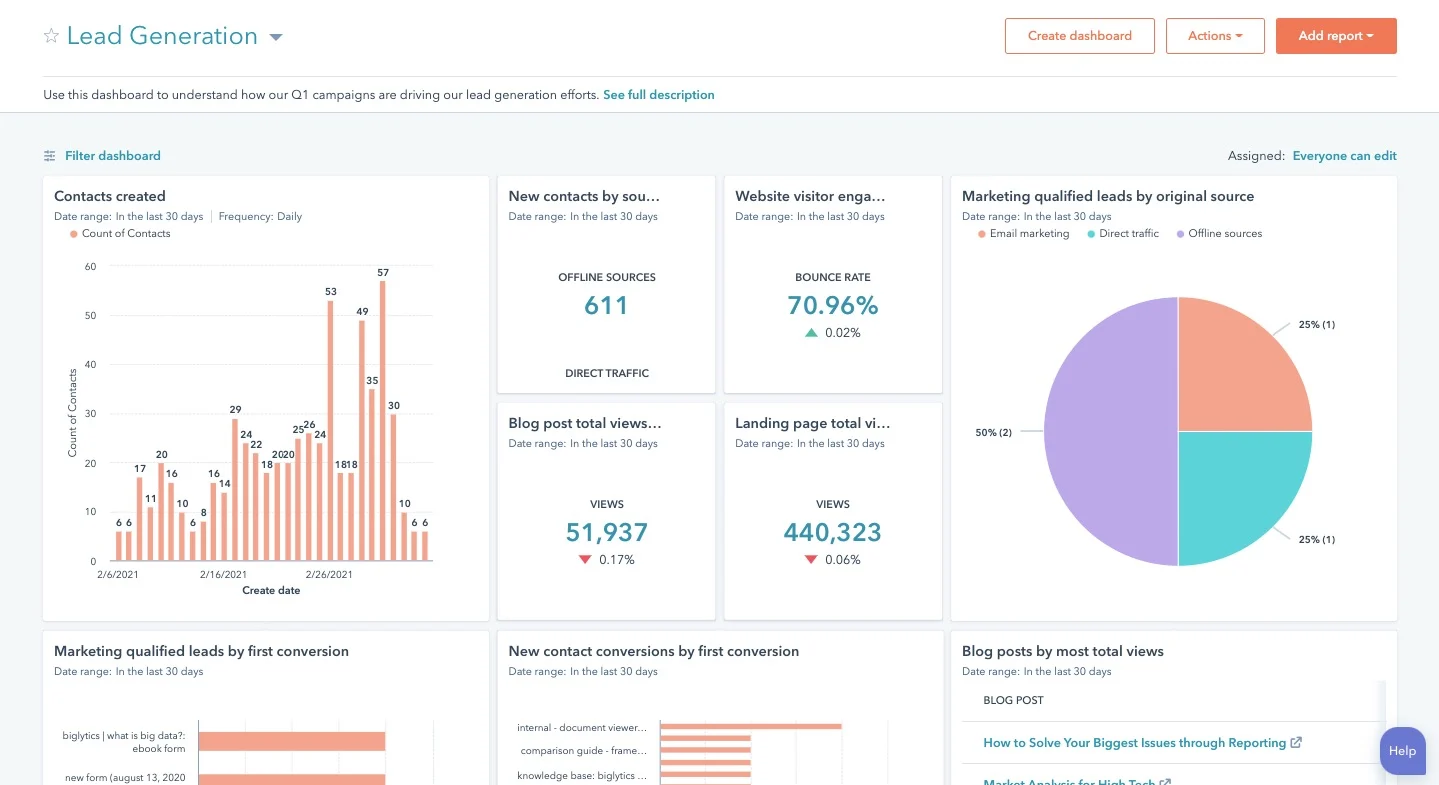
HubSpot Marketing Analytics Software
Measure the performance of all your marketing campaigns in one place with built-in analytics, reports, and dashboards.
- Marketing Analytics
- Dashboard Software
- Website KPIs
- And More!
Get started with HubSpot’s free Traffic Analytics Tool.
Drill down into your website’s traffic sources and sift through your organic search traffic bucket to identify the keywords people use to arrive at your site.
Repeat this exercise for each of your topic buckets.
Having trouble brainstorming with relevant search terms? You can always head on over to your customer-facing colleagues in sales or service. Ask them what types of questions they’re fielding.
Those are my favorite starting points for keyword research. In addition to creating great SEO-optimized content, this step allows you to create helpful resources to share with customers and to use in marketing campaigns.
At HubSpot, we use the Search Insights Report, a template designed to help you bucket your keywords into topic clusters, analyze MSV, and inform your editorial calendar and strategy.
Featured Resource: Search Insights Report Template
Step 3. Understand how intent affects keyword research and analyze accordingly.
User intent is one of the most important factors in your ability to rank well on search engines like Google.
That means it’s vital that your web page addresses the problem a searcher wants to solve rather than simply including the keyword the searcher used.
So, how does this affect your keyword research?
It’s tempting to take keywords at face value, but they can have many different meanings.
And because the intent behind a search is so important to your ranking potential, you need to be extra careful about how you interpret the keywords you target.
Let’s say you’re researching the keyword “how to start a blog” for an article you want to create. “Blog” can mean a blog post or the blog website itself, and the searcher’s intent behind that keyword will influence the direction of your article.
Does the searcher want to learn how to start an individual blog post? Or do they want to know how to launch a website domain for a new blog?
If your content strategy only targets people interested in the latter, you’ll need to determine the keyword’s intent before using it.
To verify a user’s intent, it’s a good idea to simply enter this keyword into a search engine yourself and see what types of results come up.
I did a quick search for “how to start a blog,” and it looks like most users are searching for info on how to start a website with a blog, not an individual blog post:
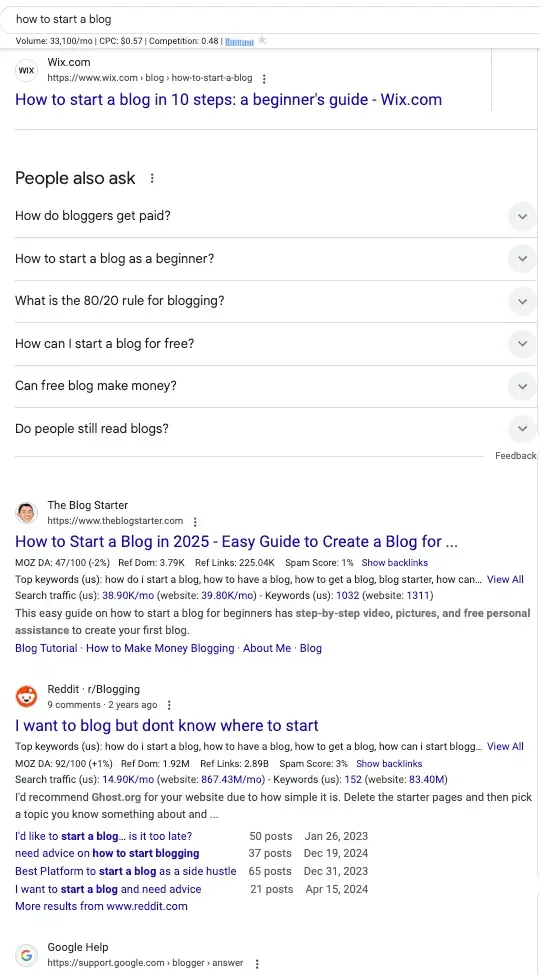
Make sure the type of content Google is displaying relates to your intention for the keyword.
Step 4. Research related search terms.
This is a creative step you may have already thought of when doing keyword research. If not, it’s a great way to fill out those lists.
If you’re struggling to think of more keywords people might be searching about a specific topic, take a look at the related search terms that appear when you plug a keyword into Google.
I searched Google for “AI search grader,” a new free product from HubSpot. At the bottom of the first page, I can see that users are also searching specifically for an AI search engine.

These keywords can spark ideas for other keywords you may want to take into consideration.
Want a bonus? Type in some of those related search terms and look at their related search terms. Looking at the related search terms for “AI search grader free,” I can see that people are also searching for more information on generative search engines.
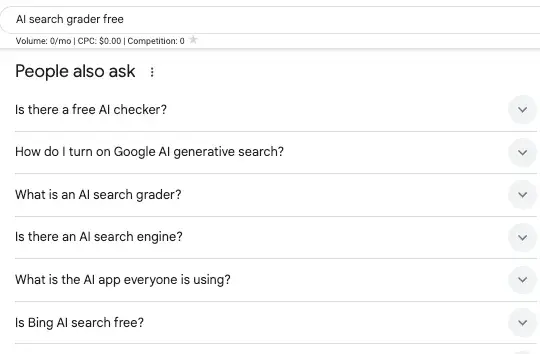
Step 5. Use keyword research tools to your advantage.
Keyword research and SEO tools can help you brainstorm more keyword ideas based on exact-match keywords and phrase-match keywords based on the ideas you’ve generated up to this point. And with AI-enabled tools at your fingertips, SEO research is more accessible than ever.
Here are a few popular options to try:
1. Ahrefs Webmaster Tools — One of the most highly regarded SEO tools out there, and it offers a free basic level.

2. SE Ranking — A comprehensive SEO research tool with lots of valuable data.
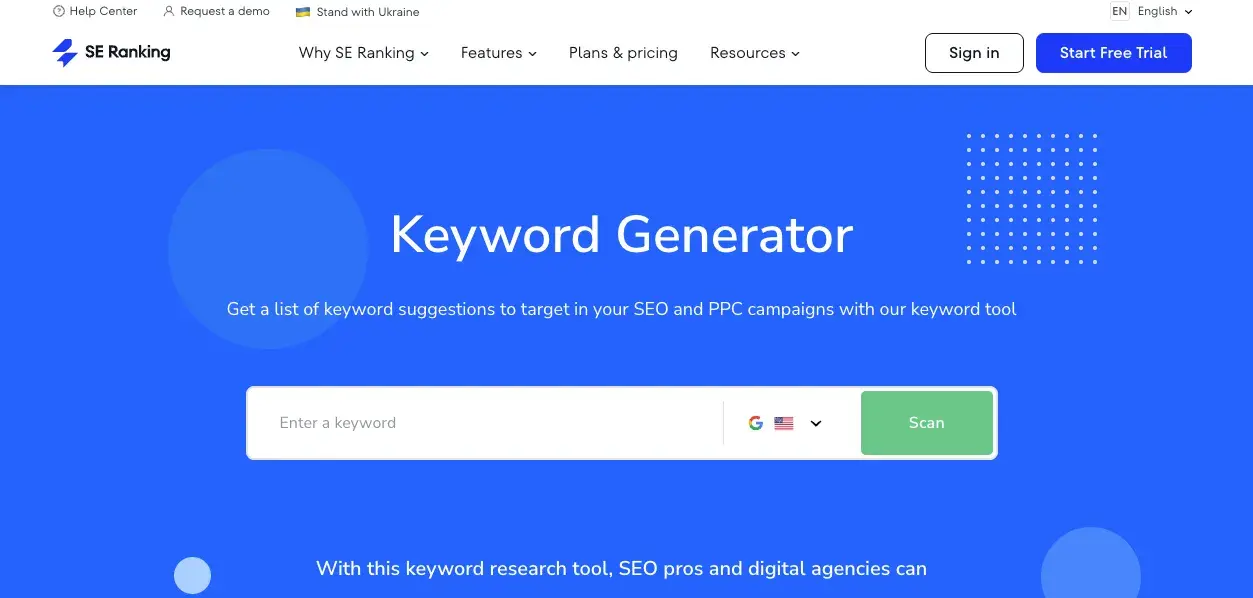
3. SEMrush Keyword Magic Tool — One of the most comprehensive SEO companies on the market with a valuable SEO research tool.
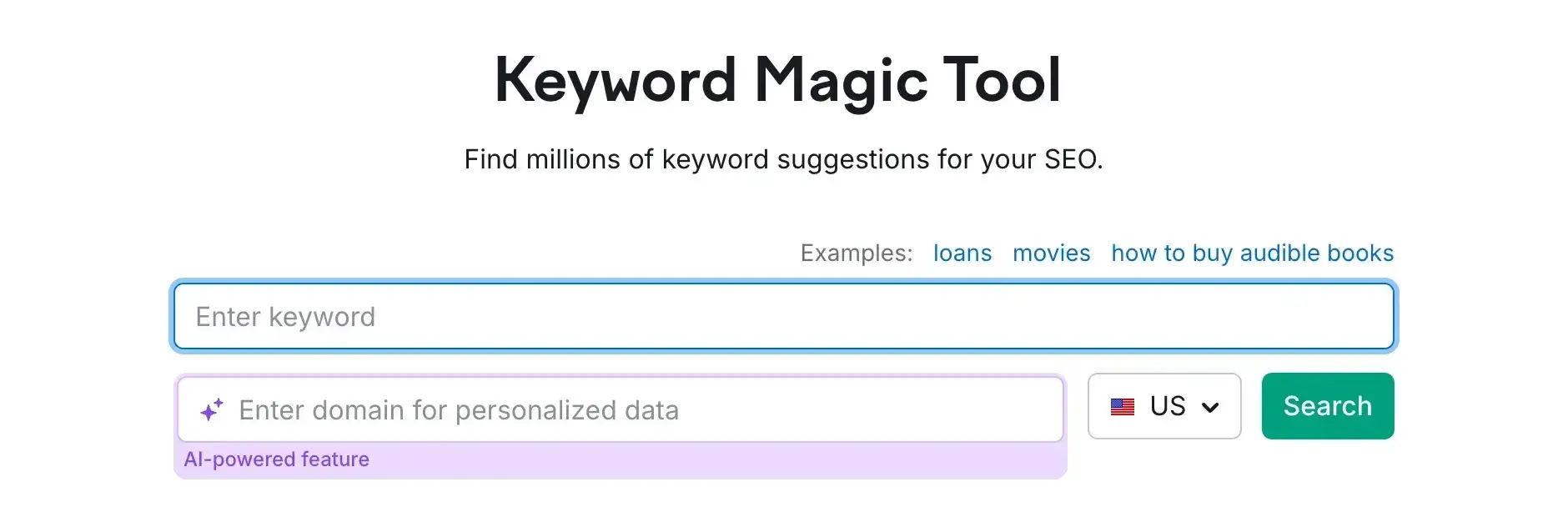
4. Ubersuggest — Featuring up to three free searches a day and AI-enabled recommendations.
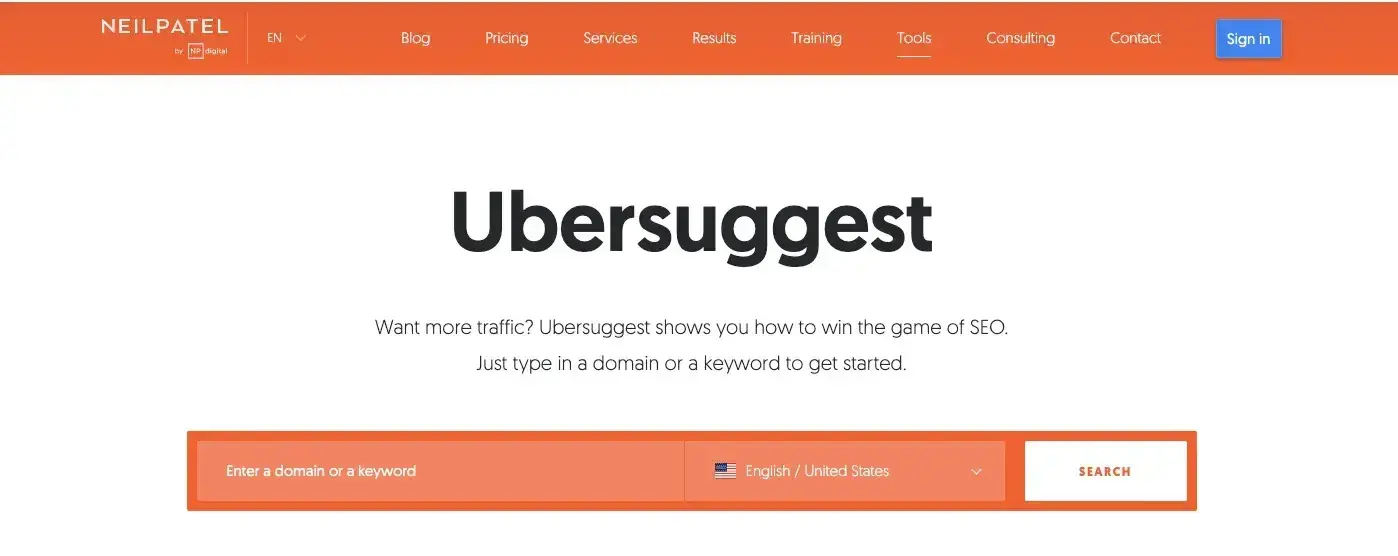
5. Free Keyword Research Tool - RyRob’s easy-to-use keyword research tool provides keyword and keyword cluster topics.

6. Google Keyword Planner — Google’s free tools allow you to search for keyword ideas based on the keyword or your website.
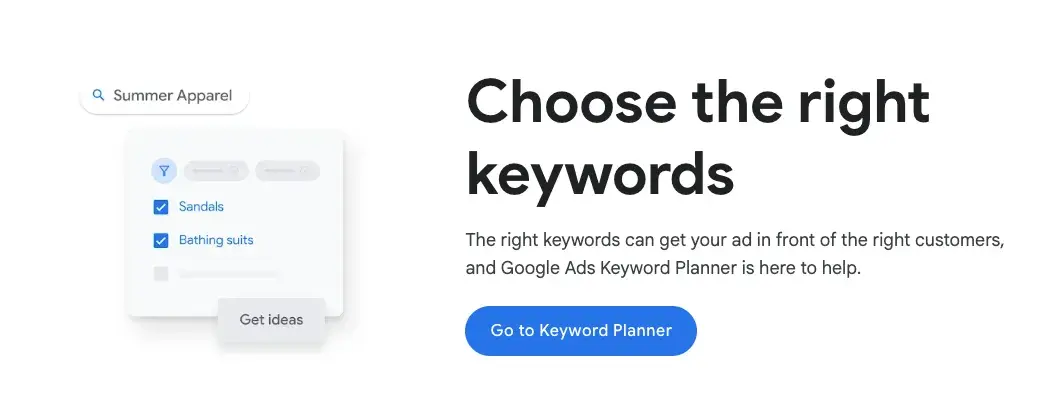
7. Keywords Everywhere — A low-cost option that sits on top of your website searches and provides valuable SEO information.

8. KeywordTool.io — Uses Google autocomplete to identify new keyword ideas.
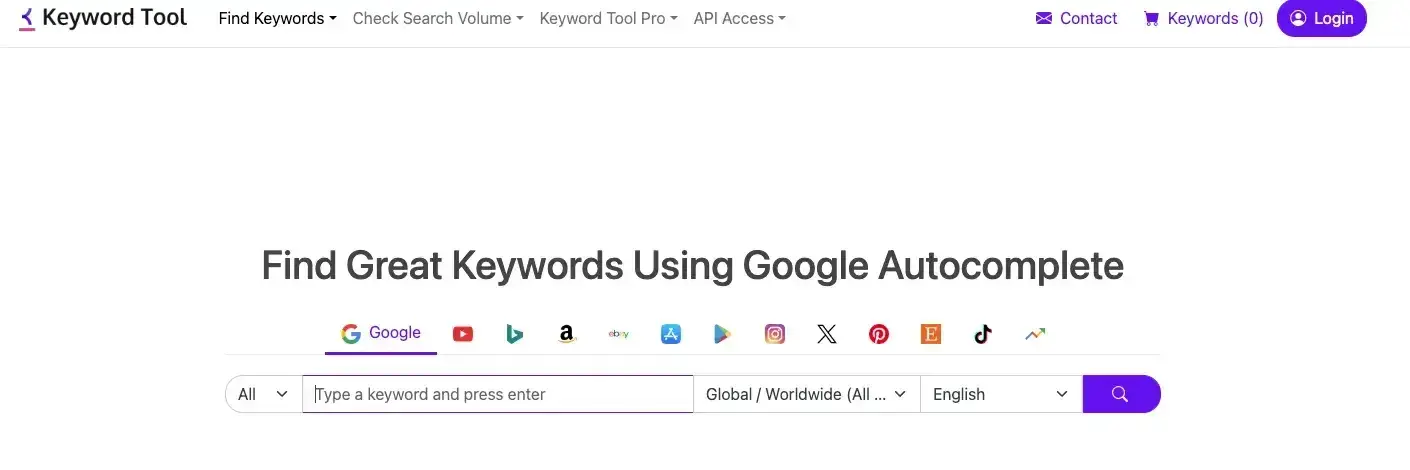
9. KWFinder — A free, easy-to-use SEO research tool that helps you find top keywords.

10. SearchVolume.io — Helpful for finding monthly search volume to help prioritize specific keywords.

11. Rank Tracker — A solid tool for monitoring SERP data by ranking relevant keywords, identifying keyword gaps, and autocompleting phrases on different search engine tools.
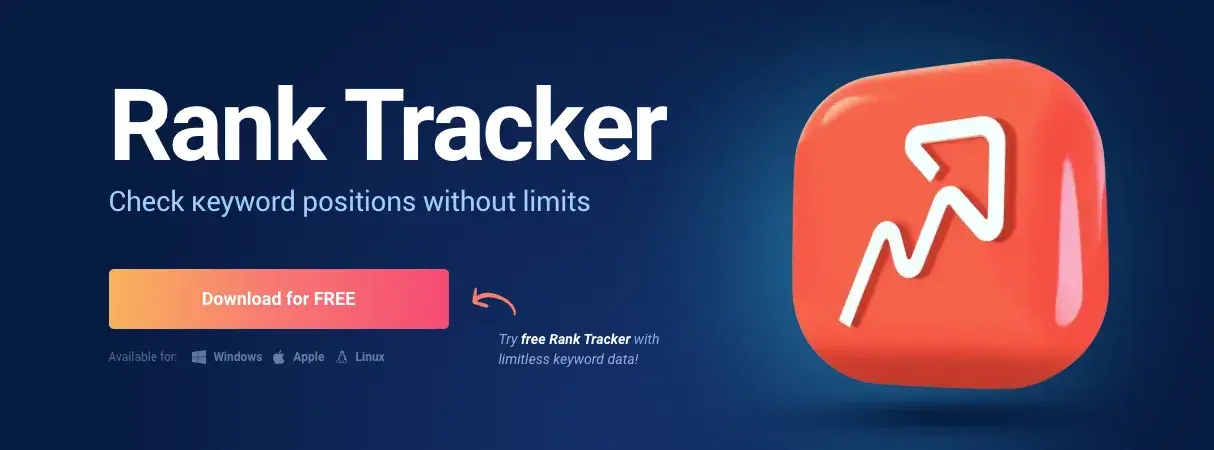
How to Find and Choose Keywords for Your Website
- Use Google Keyword Planner to cut down your keyword list.
- Prioritize low-hanging fruit.
- Check the monthly search volume (MSV) for keywords you’ve chosen.
- Factor in SERP features as you choose keywords.
- Check for a mix of head terms and long-tail keywords in each bucket.
- See how competitors are ranking for these keywords.
Once you have an idea of the keywords that you want to rank for, now it’s time to refine your list based on the best ones for your strategy. Here’s how.
Step 1. Use Google Keyword Planner to cut down your keyword list.
In Google’s Keyword Planner, you can get search volume and traffic estimates for keywords you’re considering. Then, take the information you learn from Keyword Planner and use Google Trends to fill in some blanks.
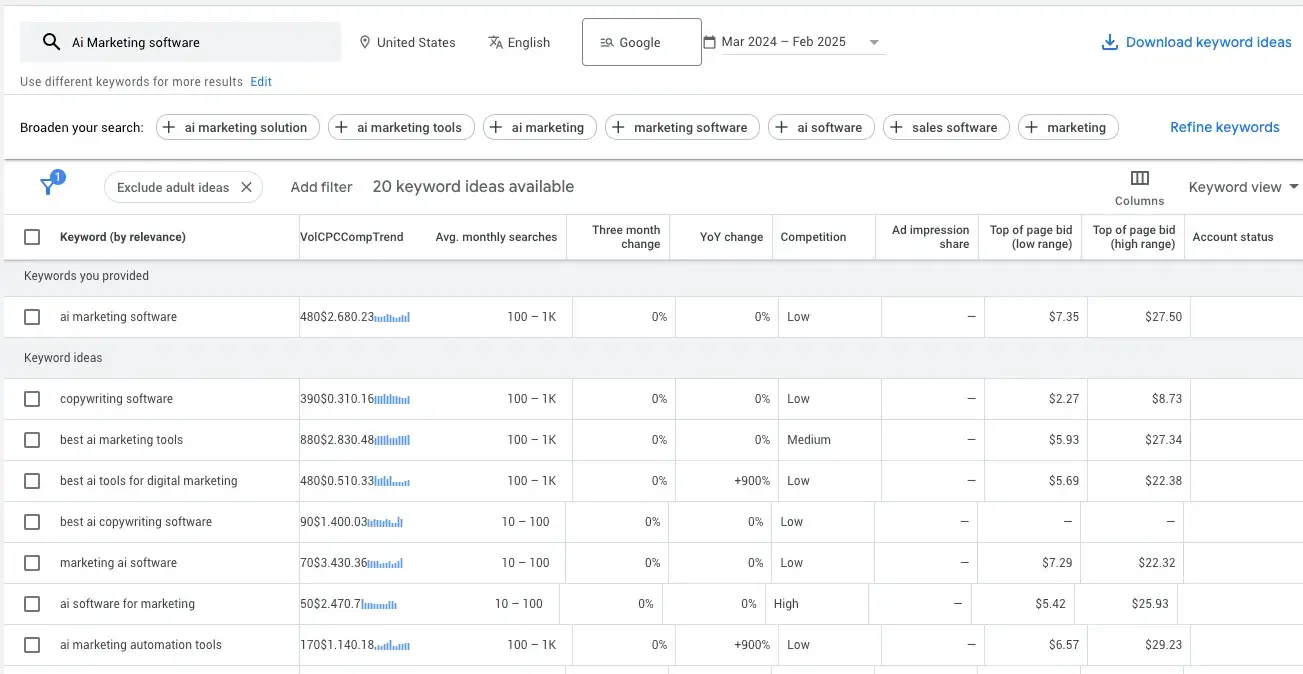
Use the Keyword Planner to flag any terms on your list that aren’t a good fit. However, before you remove them completely, there may be other reasons to consider low-volume keywords.
Have a look at trend history and projections in Google Trends to see if there’s any seasonality to the phrase. Google Trends can help you determine which terms are trending upward and are worthy of your focus.
.png)
Keyword Research Template
Build your SEO strategy with this free template.
- Search Volume
- CPC
- Ranking
- Keyword Difficulty
Download Free
All fields are required.
.png)
Step 2. Prioritize low-hanging fruit.
That is, prioritize keywords that you have a chance of ranking for based on your website’s authority.
Large companies typically go after high search volume keywords, and since these brands are well established already, Google typically rewards them with authority over many topics.
You can also consider keywords that have little competition. Keywords that don’t already have multiple articles battling for the highest rank can afford you the spot by default — if there’s no one else trying to claim it.
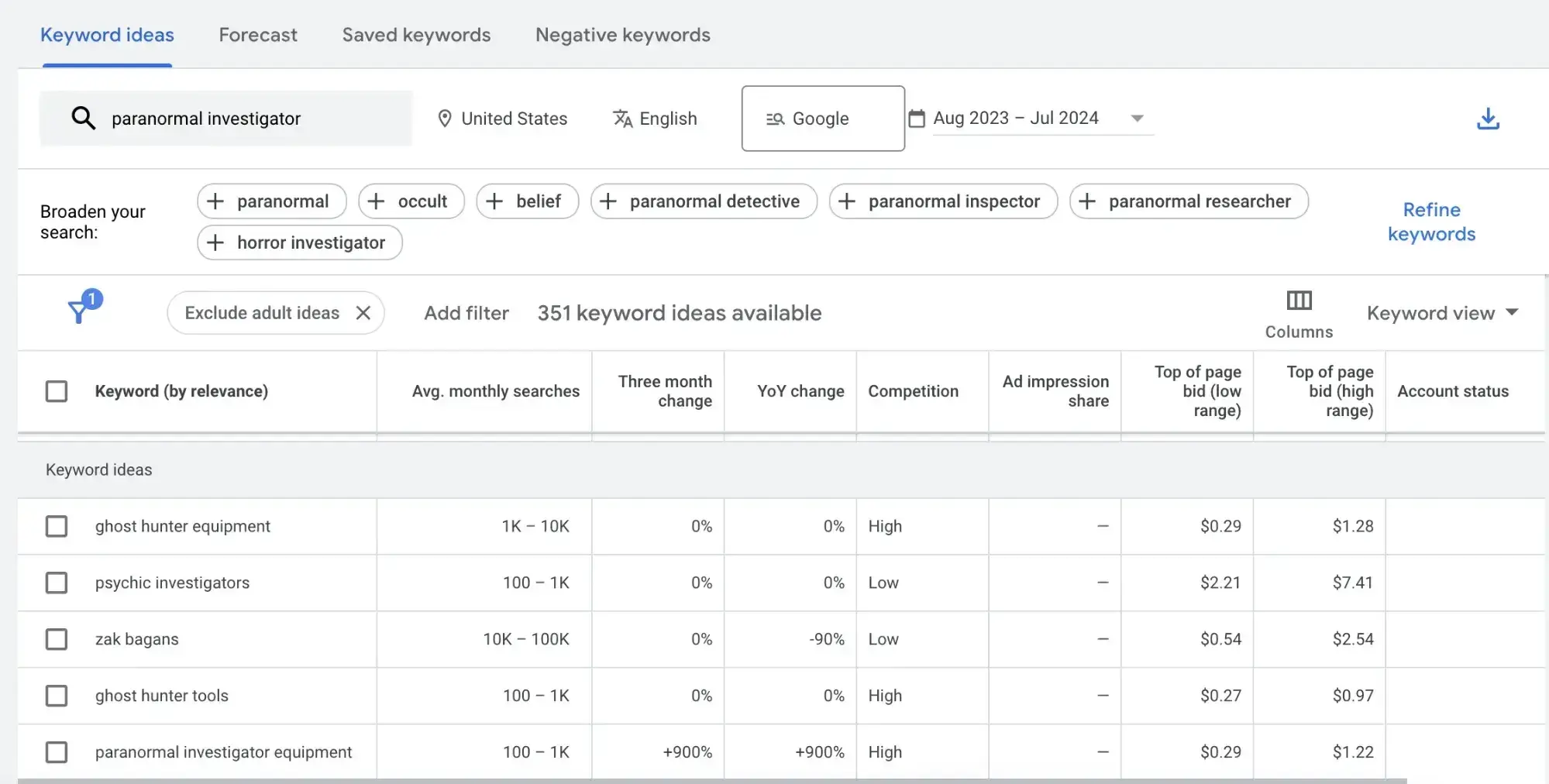
Step 3. Check the monthly search volume (MSV) for keywords you’ve chosen.
You want to write content around what people want to discover, and checking MSV can help you do just that. Monthly search volume is the number of times a search query or keyword is entered into search engines each month.
Here are the results from Ahrefs on “SEO keyword strategy,” which has an MSV of 900:
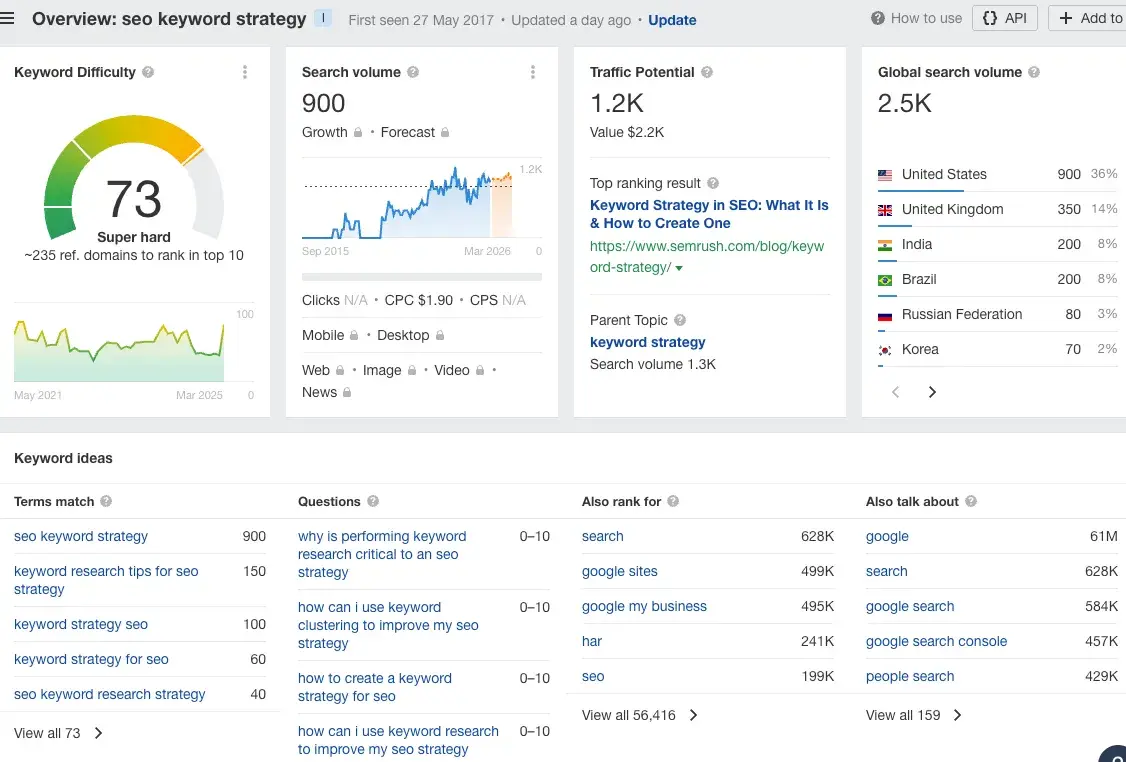
Tools like searchvolume.io or Google Trends can help you find the most searched keywords for related keyword clusters for free.
Step 4. Factor in SERP features as you choose keywords.
There are several SERP feature snippets that Google will highlight if used correctly. You can find them by searching for keywords and seeing the first result.
I’ll summarize the more common snippet types here — you can read about all 33 of them on Google.
Image Packs
Image packs are search results displayed as a horizontal row of images that appear in an organic position. If there’s an image pack, you should write an image-heavy post to win placement in it.
For instance, here’s the image pack for “cat detective agency”:

AI Overviews
A relatively recent addition to Google’s rich results, AI Overviews provides an AI-written summary for a certain percentage of searches. (That percentage has changed a few times to meet the demand for accuracy.)

Paragraph Snippets
Featured snippets, or paragraph snippets, are short snippets of text that appear at the top of Google search results for quick answers to common search queries. I asked Google, “Where do elephants live?” and it returned this featured snippet:

Understanding the searcher’s intent and providing succinct answers can help you win a featured snippet.
List Snippets
List snippets, or listicles, are snippets made for posts outlining steps to do something from start to finish — often for “How To” searches. Writing posts with direct, clear instructions and formatting can assist in winning this placement.
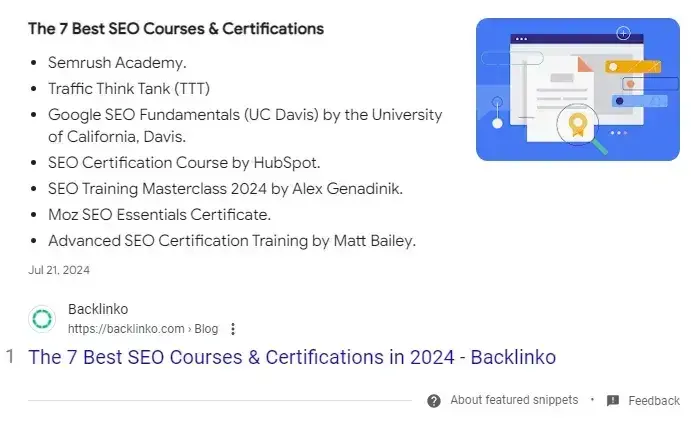
Video Snippets
Video snippets are short videos that Google displays at the top of a SERP in place of text-based featured snippets.

Posting a video on both YouTube and your website can help you win this placement if you’re tagged in the targeted keywords people are searching for.
Step 5. Check for a mix of head terms and long-tail keywords in each bucket.
Head terms are keyword phrases that are generally shorter and more generic — typically just one to three words in length. Long-tail keywords, on the other hand, are longer keyword phrases usually containing three or more words.
You should have a mix of head terms and long-tail terms in order to build a well-balanced keyword strategy with long-term goals and short-term wins.
That’s because head terms are generally searched more frequently, making them often (not always, but often) much more competitive and harder to rank for than long-tail terms.
Think about it: Without even looking up search volume or difficulty, which of the following terms do you think would be harder to rank for?
- how to write a great blog post
- blogging
If you answered #2, you’re absolutely right. Here’s the breakdown:
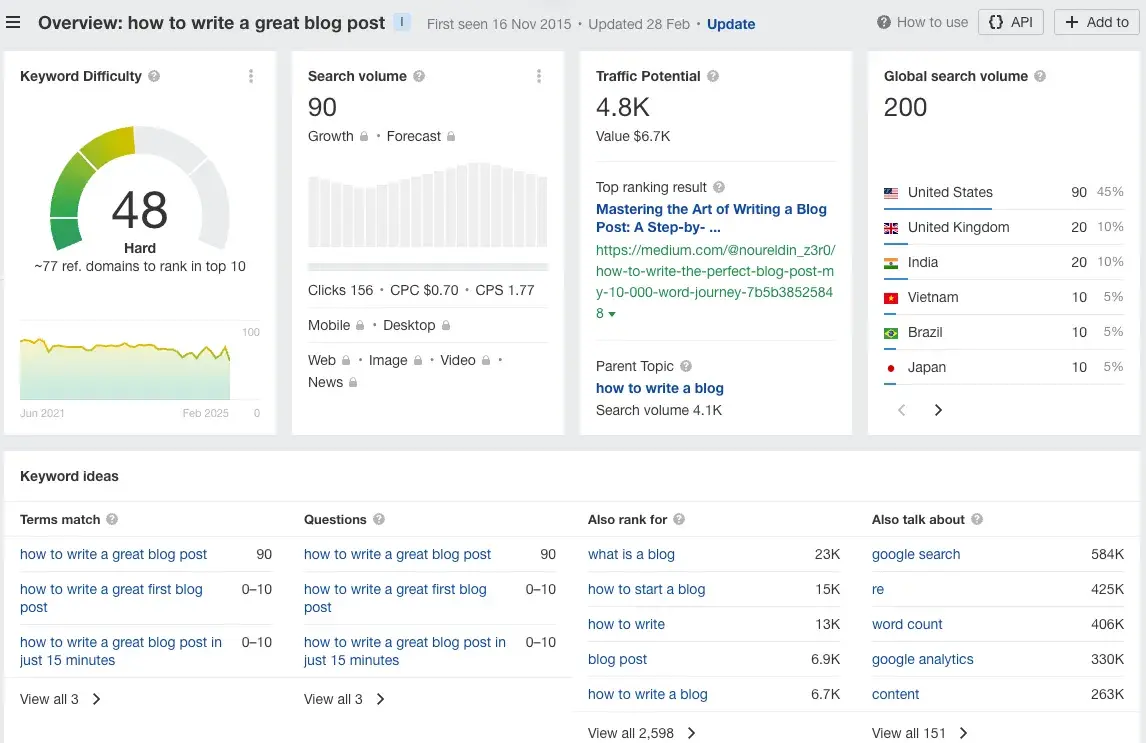

Head terms generally boast the most search volume (meaning greater potential to send you traffic), but the traffic from “how to write a great blog post” is probably more desirable because people using specific queries are more likely to be your ideal audience than those searching more generally.
Because long-tail keywords tend to be more specific, it’s usually easier to determine search intent. Someone searching for the head term “blogging” might not be your target audience.
Kalepp says that short-tail keywords “can make it really difficult to rank, especially if you are a newer blog and you don’t have that domain authority quite yet.”
She recommends “targeting those long-tail keywords, because a lot of times the competition is lower on them. And it allows you to really develop a niche and allows you to rank.”
Pro tip: Check your keyword lists for a healthy mix of head terms and long-tail keywords to give you quick results and also a long-game advantage.
Kalepp, who’s worked on both the HubSpot and The Hustle blogs, says that it can be challenging to find the right balance.
When she worked on the HubSpot blog, “there wasn't a lot of fluctuation in what the search volume looked like, but for The Hustle blog, there were constant changes because we were writing about subjects that were really trendy.
“And so it was imperative for us to strike when it was hot,” she says of The Hustle blog.
Step 6. See how competitors are ranking for these keywords.
Just because a keyword is important to your competitor doesn’t mean it’s important to you. However, understanding what your competitors are trying to rank for is a great way to help you give your list of keywords another evaluation.
If your competitor is ranking for certain keywords that are also on your list, it makes sense to work on improving your ranking for those.
Kalepp says she’s a big fan of “doing a competitor analysis and understanding that landscape really well — and then using those same content pillars to build out a content library.”
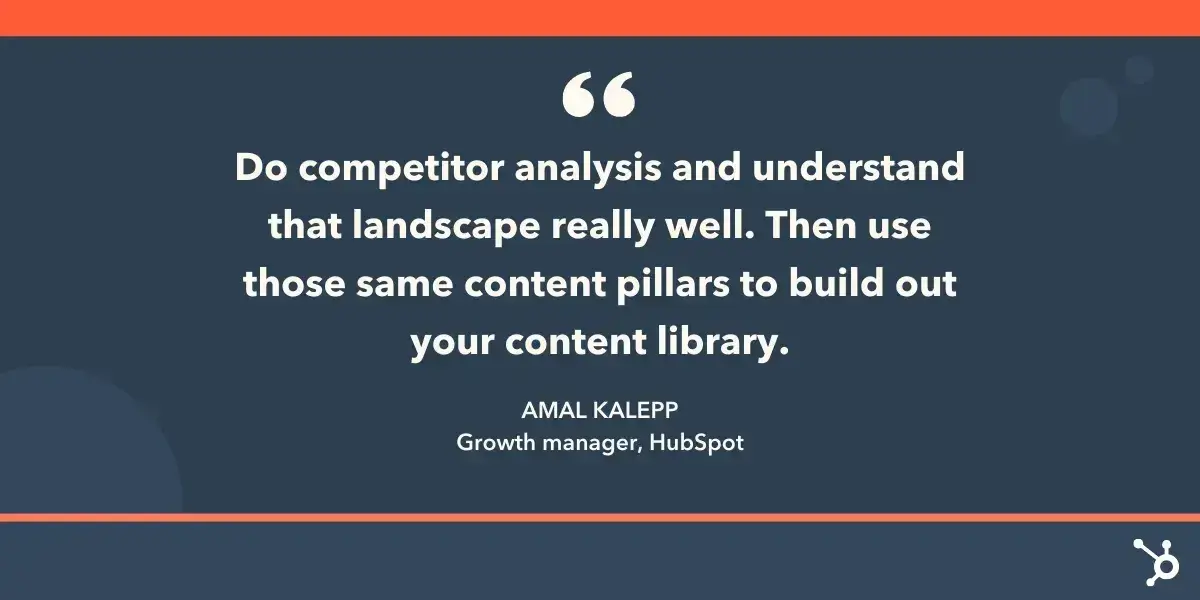
Don’t ignore the ones your competitors don’t seem to care about — it could be a great opportunity to own market share on other important terms.
Pro tip: A quick way to understand which terms your competitors rank for is manually searching for keywords in an incognito browser to see what positions your competitors are in.
Researching the Best Keywords for SEO
There are no “best” keywords, just those your audience searches — so your strategy should be focused on how to rank your pages and drive traffic to your site. Ultimately, the best keywords for your SEO strategy should factor in relevance, authority, and volume.
Remember, you’re looking for highly searched keywords that you can reasonably compete for with excellent content.
You’re Ready to Build Out Your SEO Content
If you’ve followed along with the steps, you now have a list of keywords to help you focus on the right topics for your business and get you to realize short-term and long-term gains. Be sure to re-evaluate these keywords every few months — I think once a quarter is a good benchmark, but some businesses like to do it even more often than that.
As you gain even more authority in the SERPs, you’ll find that you can add more and more keywords to your list.
Kalepp urges you to remember that building up a strong SEO strategy takes time. “It takes a long time to see results when you’re first building that strategy out,” she says. “Just understand that it takes time.”
Editor's note: This post was originally published in January 2014 and has been updated for comprehensiveness.
.png)
Keyword Research Template
Build your SEO strategy with this free template.
- Search Volume
- CPC
- Ranking
- Keyword Difficulty
Download Free
All fields are required.
.png)


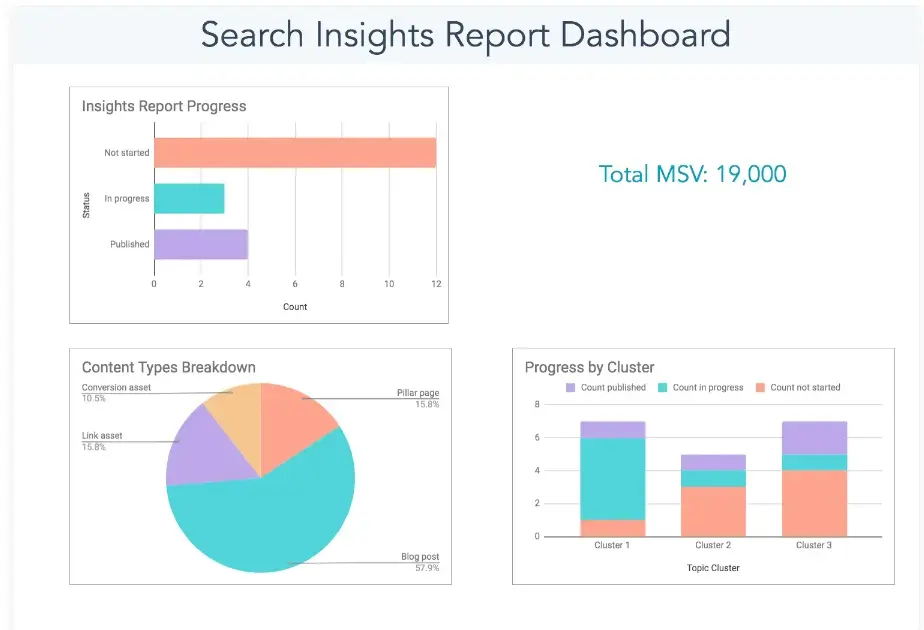





![The Definition of a Long-Tail Keyword [In Under 100 Words]](http://cdn2.hubspot.net/hub/53/file-616662343-jpg/Blog_Thinkstock_Images/monkey.jpg)

